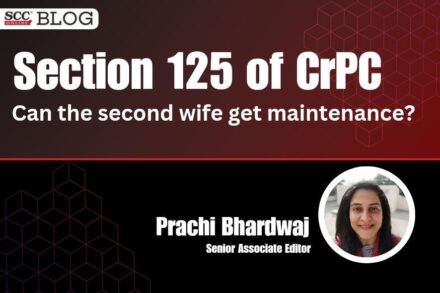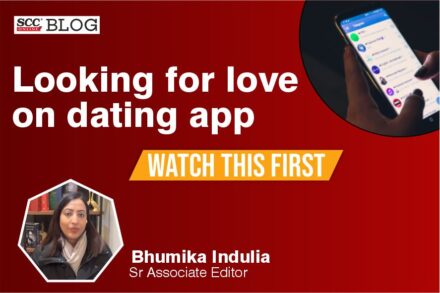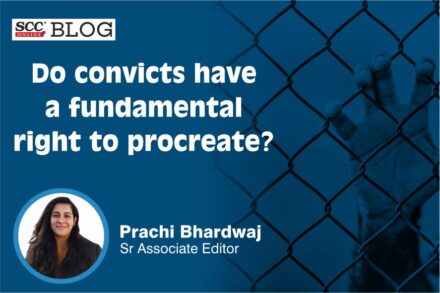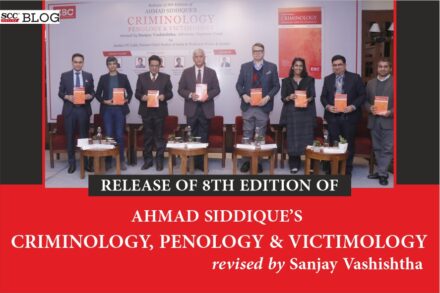Justice (Retd.) V. Ramasubramanian, Chairperson of the National Human Rights Commission and Former Judge, Supreme Court of India, released Nina Rohinton Nariman’s ‘Informational Privacy: Constitutional and Common Law Remedies’ which is published by Eastern Book Company (EBC). Justice Ramasubramanian graced the event as Chief Guest.
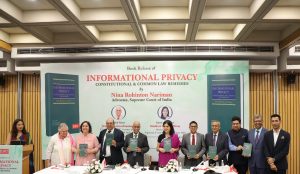
At the outset, Justice Ramasubramanian recounted his personal experience of him being bombarded with various remedies on how to deal with the astrological change according to his sun sign. He remarked that he tends to think that Google knows much more about us than our own spouse and it was in this context that informational privacy was very important.
Paradox of privacy
He said that the paradox of privacy is two-fold. The first paradox of privacy was that on social media, a person is simultaneously the consumer as well as the product offered to someone else. Whereas in real life, one can either be a producer or a consumer, but on social media, a person becomes a combination of both. “Therefore, the first lesson that all of us should learn is that when somebody offers you some services free of cost, he is offering them at a cost to somebody else. If this underlying principle was understood, probably all of us would maintain digital hygiene, which we do not.”
While concurring with Mr. Sudeep Malik, Director, EBC, Justice Subramanian remarked, “AI has already started writing books in the name of some authors. He also hesitantly stated that “AI has started writing judgments also”. He further jokingly remarked that, “fortunately, this book is not written by AI but rather NI. What is NI? It is native intelligence.”
The second paradox, according to him, was that all of us wanted our own privacy kept intact but we are interested in peeping into the lives of others through social media. While expressing the sad state of affairs, he illustrated that a very famous actor died in Hyderabad in a road accident and his body was brought to a hospital. The next day, several selfies of the hospital nurses with the dead body were uploaded online. Therefore, he questioned whether it was fair to only blame the tech giants when we had not kept our conduct clean.
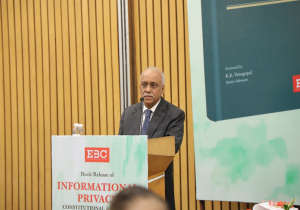
Journey of privacy
Exploring the journey of privacy, Justice Ramasubramanian stated that perhaps it began in 1604, when Sir Edward Cook said that ‘every man’s house was his castle and fortress’. Further, he quoted Bernard Schwartz, a New York Law School Professor, “Our house may still in theory be a castle, but that castle no longer sits on a hill isolated by a moat. The modern castle is connected to a central water system, sewerage system, and garbage collection system, and more often than not, to houses on either side.” Therefore, Justice Ramasubramanian reiterated that every man’s home was no longer his castle.
He also mentioned how in 2000, the then CEO of Sun Microsystems said that privacy is dead with the advent of the internet, get over it.
From Ro to Ram
He elaborated that upon careful inspection of the book, one would find that it was the judgment in K.S. Puttaswamy (Privacy-9J.) v. Union of India (2017) 10 SCC 1, that must have triggered Nina to write this book, and the Puttaswamy (supra) judgement was fueled by the decision in Kaushal Kishor v. State of U.P. (2023) 4 SCC 1. Notably, one of the authors of Puttaswamy (supra) was Former Justice Rohinton F. Nariman whereas Justice Ramasubramanian himself was the author of Kaushal Kishor (supra). Hence, this book was a journey from Ro to Ram.
The Book
Justice Ramasubramanian stated that there were five recognised characteristics of a good book, namely, a clear premise, a clear process, supporting statements, cohesive structure, and a solid takeaway. On a lighter note, he said that it must not be like a judgment.
Further, he explained the structure of the book, which was divided into nine chapters, dealing with common law, the evolution of privacy, the right to privacy abroad, personality rights, the development of a tort remedy for right to privacy, and much more.
He also remarked that recently, regulators and several EU countries under the General Data Protection Regulation (GDPR) had imposed huge fines on companies such as Meta, Amazon, and LinkedIn for privacy violations.
Justice Ramasubramanian also remarked that this book could be read in one go as well as in pieces, which was useful because nobody present here was reading a book in one go. He joked that most of us are not even reading WhatsApp messages unless they concern someone else’s life. Since it was very difficult now for people to read an entire book, he stated that a book should have a thread running throughout and at the same time it must be in patches.
Where do we stand on Informational Privacy?
Justice Ramasubramanian narrated the recent decision of the Inter-American Court of Human Rights (‘IACHR’), wherein the Republic of Colombia was held legally responsible for the systematic violation of the human rights of several members of Lawyers’ Collective José Alvear Restrepo (‘CAJAR’), a Colombian organisation dedicated to the defence and promotion of human rights, and their families, who were subjected to years of persecution, harassment, stigmatisation and surveillance. This judgment also talked about how personal informational privacy rights can assume not just national but also international ramifications. He remarked that such decisions required a deeper analysis.
Considering the age of social media and internet, he mentioned that privacy was not completely dead, rather it was still on the life support system.
Justice Ramasubramanian concluded his speech by appreciating the huge gathering and congratulating Nina R. Nariman for her book.



